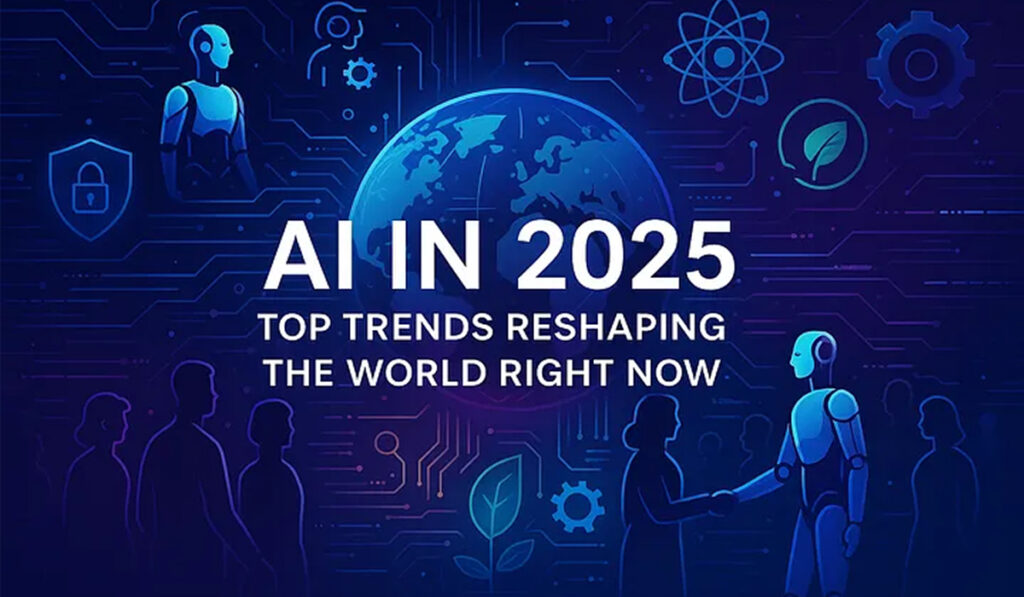
The tech world in mid‑2025 is buzzing with two major innovations: agentic AI and multimodal AI. These terms are often searched together as users look for futuristic AI tools that both think independently and process multiple input types.
What Is Agentic AI?
Agentic AI refers to systems that can make independent decisions, perform complex multi-step tasks, and initiate actions without direct human commands. These AI agents can prioritize tasks, learn from their environment, and deliver results faster and with greater accuracy than traditional software. Enterprises are increasingly investing in agentic AI to streamline workflows, automate customer service, and even conduct internal audits.
Why it matters:
- Automates complex tasks in industries like finance and healthcare
- Frees human workers from repetitive tasks
- Shifts AI from passive tools to proactive collaborators
What Is Multimodal AI?
Multimodal AI allows machines to process and respond to multiple types of data at once—such as text, images, audio, and video. This makes interactions with AI feel more natural and comprehensive. For instance, a multimodal chatbot could understand a customer’s spoken question while analyzing an image they uploaded and respond with both a voice and visual answer. These capabilities are especially valuable in fields like education, marketing, and healthcare, where AI can now interpret X-rays, read patient histories, and recommend treatments all at once. It bridges the communication gap between humans and machines, enhancing both user experience and efficiency.
Key advantages:
- Enables richer, more natural interactions (e.g., voice + image chats)
- Powerful in healthcare: analyzing X‑rays and patient records together
- More immersive user experiences in apps and virtual assistants.
- Real-World Applications Already Making Waves
The implementation of these technologies is no longer theoretical. In customer service, agentic AI agents are being trained to handle full support cases, including follow-ups and escalations. Healthcare providers are using multimodal AI to cross-reference scans, symptoms, and patient notes for faster diagnoses. Even in retail, AI is combining video feeds with sales data to predict customer behavior and suggest personalized promotions. These use cases demonstrate the tangible impact of this AI evolution on everyday business operations.
Despite the benefits, adopting agentic and multimodal AI comes with its own set of challenges. Companies must carefully manage the risk of AI making poor autonomous decisions without oversight. This is particularly sensitive in sectors like finance or healthcare, where errors can have serious consequences. Moreover, issues of data privacy, bias, and transparency remain critical. Governments around the world, including the EU and the United States, are pushing for responsible AI development, emphasizing human oversight and clear accountability frameworks to ensure that technology serves the public good.
The Business Case for Adoption
For businesses, the integration of these systems isn’t just a trend—it’s fast becoming a competitive necessity. Forward-thinking companies are piloting agentic AI in HR, accounting, and logistics. They’re also building customer-facing applications with multimodal capabilities to engage users more meaningfully. This strategic shift is not just about keeping up with innovation; it’s about improving performance, reducing costs, and creating smarter, more agile organizations. Leaders who invest now in AI infrastructure, staff training, and ethical compliance will be better positioned for long-term success.
Takeaways for Tech Leaders and Entrepreneurs
If you’re in tech leadership, now is the time to explore both agentic and multimodal AI. Start small—test agentic tools in routine processes or adopt multimodal chat features in customer engagement. Invest in training your teams, securing your data, and understanding the limitations of these models. Most importantly, consider the broader impact: these technologies are not only shaping businesses—they’re reshaping human-AI interaction at its core.

Bella Richardson is a dedicated journalist and news analyst known for her clear, thoughtful reporting and her ability to make complex stories accessible to a broad audience. With a Master of Science in Mass Communication, she brings both academic insight and real-world experience to her coverage of breaking news and trending topics throughout the United States.






